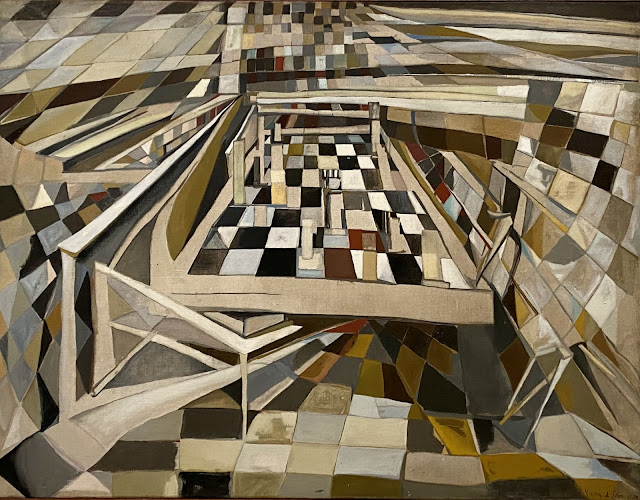“I think I’ve lived my entire life in labyrinths. It’s my way of seeing the world.”
Maria Helena Vieira da Silva
Peggy Guggenheim Collection
Maria Helena Viera da Silva - Anatomy of Space
At the Peggy Guggenheim Collection - Maria Helena Vieira da Silva: Anatomy of Space - until September 15 - is a major solo exhibition dedicated to one of the most original artists of the 20th century - curated by - Flavia Frigeri of the National Portrait Gallery - London. Featuring about seventy works from top international museums and cultural institutions - including the Centre Pompidou, MoMA, Tate Modern - and others - the exhibition traces the evolution of Vieira da Silva’s unique visual language. It explores the relationship between abstraction and figuration in her work from the 1930s to the late 1980s, with a focus on her fascination with architectural space. The exhibition repositions her art away from its usual association with Art Informel, emphasizing her influences in Paris and Brazil, and her connections to both Peggy Guggenheim and Solomon R. Guggenheim.
The Card Game - Le Jeu de cartes - detail - 1937
“When you love and you’re a painter the model you love becomes more beautiful every day,”
Arpad Szenes
Born in Lisbon, Vieira da Silva - 1908 -1992 - trained in Lisbon and Paris. Her work merges tradition with modernity, often portraying labyrinthine spaces, chromatic rhythms, and fragmented perspectives. Pieces like The Tiled Room - 1935 - and Ballet Figure - 1948 - reveal her interest in dissolving the line between figure and background. She approached art as an extension of herself, with the studio becoming both her workspace and subject. The exhibition begins with her symbiotic relationship with husband and fellow artist Arpad Szenes, followed by early works from the 1930s exploring skeletal architectural forms.
Works like Composition - 1936 - above - and - Dance - 1938 - introduce themes of movement and strategy, echoed in her wartime pieces created during exile in Brazil. These include The Disaster - 1942 - and - The Drowned - 1938 - reflecting the emotional toll of World War II.
Composition - January 1936 + Composition - 1936
The Arena - 1950 + detail
Curator - Flavia Frigeri and Karole Vail - director - Peggy Guggenheim Collection
Post-war, Vieira da Silva developed a more abstract style marked by complex, labyrinth-like structures and urban landscapes, as seen in Paris - the Night - 1951 - and Venetian Celebration - 1949 - above. Later works focus on public architecture and the interplay of internal and external space.
Venetian Celebration - 1949
Checkmate - detail - 1949-50
The Sleep - 1969
© Willy Maywald, Courtesy Jeanne Bucher Jaeger, Paris-Lisbon - courtesy peggy guggenheim Collection
"We paint at the same times, but each in our own studio. We go in together, we leave together. We lead the life of bank employees, at least in terms of regular working hours.”
Arpad Szenes
Maria Helena Vieira da Silva in her studio -Paris - 1948
The final sections present her darker-toned paintings from the 1960s and the luminous White Compositions - above - underscoring the symbolic and expressive role of white in her oeuvre. The final room offers a mini-retrospective of Vieira da Silva’s career, united by the color white. Known for her mastery of vivid tones, Vieira da Silva saw white as timeless—expressing emotions beyond any season. In her later years, she embraced white almost exclusively, giving her work a deep, spiritual dimension.
Exhibition View + Equity - 1966
Press Breakfast
Peggy Guggenheim Collection - Terrace













